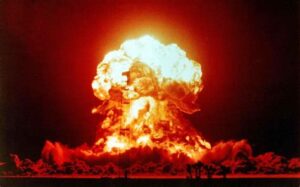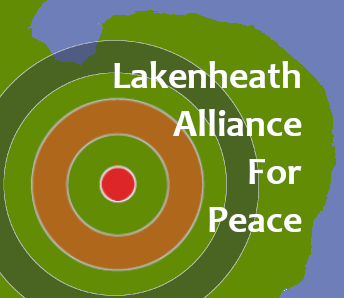
The effects of nuclear weapons are both qualitatively and quantitatively unique. It has been estimated that in World War II, all the explosives utilised by all sides amounted to 3 million tons (3-Mt) of high explosive equivalent, and that all explosives used in all previous wars amount to something over 10-Mt. The largest conventional bombs, rarely used, have less than 10 tons of explosives. The bomb dropped on Hiroshima had the equivalent of 15,000 tons (15 kilotons) of TNT. In comparison, the largest nuclear test explosion ever conducted, Tsar Bomb, had 50,000,000 tons (50 megatons) of explosives. The mushroom cloud reached 40 miles into the atmosphere and its shockwave was detected 2,500miles away.
The largest warheads currently deployed are on Chinese DF 5A land-based missiles, which are up to 5-Mt in size.
The smallest nuclear arms currently in the US arsenal has about 300 tons. Most of the 13,000 weapons in the world’s arsenals today are considered ‘low yield’, between 50,000 and 1,000,000 tons (50 kilotons to one megaton).
The 15 kiloton bomb detonated over Hiroshima decimated the city and created ground temperatures that reached about 7,000 degrees Celsius. Of the 76,000 buildings in the city, 92% were destroyed or damaged. There were more than 100,000 deaths and approximately 75,000 injuries among a population of nearly 250,000. Of the 298 physicians in the city, 270 died or were injured and 1,564 of 1,780 nurses died or were injured.
The 21-kiloton bomb detonated over Nagasaki three days later levelled 6.7 square kilometres (2.6 square miles). There were 75,000 immediate deaths and 75,000 injuries, and health consequences for the population of the city that were similar to those of Hiroshima.
Facts from ICAN and Union of Concerned Scientists.
